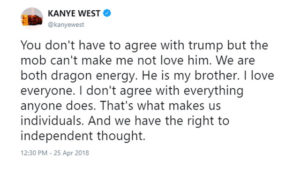One topic that I’ve been hesitant to write about but I feel is necessary is the notion of Gen-Z as spoiled or “babied”. I think amongst the older generations, Gen-Z is often looked at as much more spoiled than the rest. Apparently, our parents do everything for us and we have it much easier off compared to the other generations.
The reality of this is that the world is a much different place than it was when Millenials or Gen-X or the Baby Boomers were young. We have so many more technological advances now that everyone is benefitting from, rather than just my generation specifically. You can’t get mad at young people for having it easier than you did just because these advances weren’t around when you were young. I get that you had to walk 14 miles to school every day, but it’s not fair to say that we’re “spoiled” because our parents drop us off on the way to work or because we can text our friends instead of paying 75 cents (or however much it was) on a pay phone to talk to them.(Editor/Dad: 25 cents Cam!)
Other than these technological advances, many people believe that Gen-Z isn’t able to do things for ourselves because people have done things for us our entire lives. While this may be true for some, the overwhelming majority are doing our laundry and helping clean the dishes. In the era of social media, this highly spoiled minority is publicized more than the others. The public has a fascination with wealth, seen in reality shows or the obsession with the Kardashian’s. Since these shows are so popular on TV, people come to believe that this is normal and align their beliefs with what they see.
Another reason for a lot of behaviors is just because we’re freaking teenagers. A large portion of Gen-Z are teenagers and all teens of every generation have had similar characteristics. You can’t blame our moodiness, dramatics, or aversion to authority on our generation, it’s our age. People like to forget their faults and think they were perfect angels when they were teens but you weren’t.
The fact of the matter is that many people are spoiled and babied. I’m not going to lie and say that I’m not spoiled. I am. My parents have provided a life for me that is beyond what I need and I’m forever grateful for that. But just since I was spoiled growing up (and still am) and my mom did a lot of things for me, doesn’t mean that I’m not capable to do good work and working hard. Just because I didn’t do my own laundry until I was 18 (I love you Mom), doesn’t mean that I can’t go kick some ass and do some great work.
What I’m trying to get across is the notion that stereotypes can be extremely harmful.
To write off an entire generation because of some incapable people is not only harmful to us but is harmful to the people that are refusing to work with some pretty smart and hardworking individuals. Try to make your judgments on a case-by-case basis. And remember we’re all just some people trying to live a fun and fulfilled life, just like y’all.
(Editor/Dad note: The opinions and statements made by this spoiled Gen Z person do not reflect the opinions of the owner of this highly engaging, entertaining, and thought-provoking blog. But, I do agree with him in that ‘time in life’ issues, are always time in life issues. Gen Z will have their hickeys as a generation, but they will also have things that make them great. Just like every generation before them!)
 This post was written by Cameron Sackett (not Tim) – you can probably tell because it lacks grammatical errors!
This post was written by Cameron Sackett (not Tim) – you can probably tell because it lacks grammatical errors!
HR and TA Pros – have a question you would like to ask directly to a Gen Z? Ask us in the comments and I’ll respond in an upcoming blog post right here on the project. Have some feedback for me? Again, please share in the comments and/or connect with me on LinkedIn.



